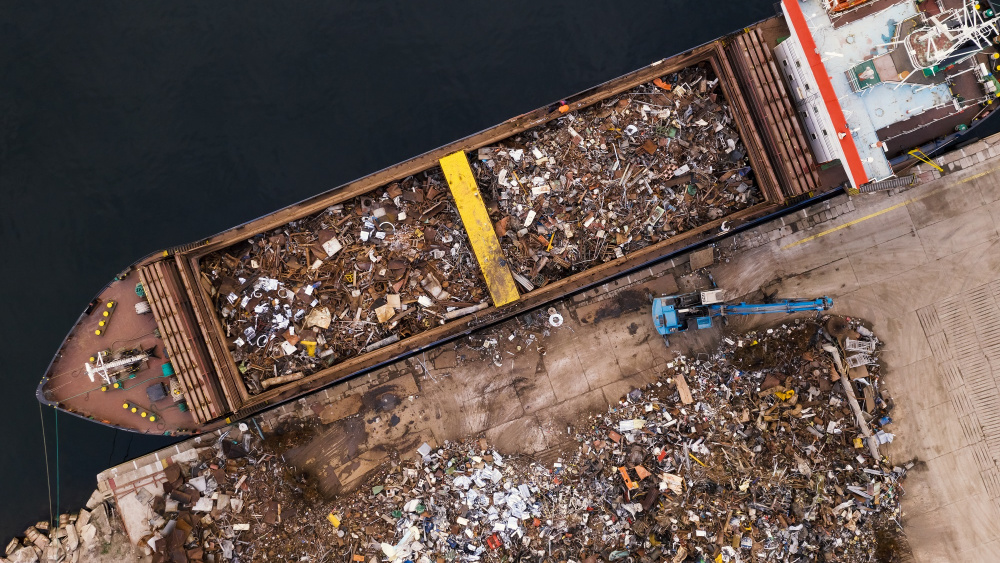Exports in recyclable raw materials increased in 2023

In 2023, exports of recyclable raw materials – which include recyclable waste and scrap as well as other secondary raw materials (by-products) – from the EU to non-EU countries amounted to 39.3 million tonnes.
Export volume in recyclable raw materials has been on an upward trend since 2004, increasing by 74% (+16.7 million tonnes).
Meanwhile, imports of recyclable raw materials from non-EU countries into the EU amounted to 39.8 million tonnes in 2023, a decrease of 3.8 million tonnes compared with 2004 (-8.6%).
Source dataset: env_trdrrm
Metal highest export, organic highest import of recyclable raw materials
In 2023, the exports of metals from the EU amounted to 21.0 million tonnes, accounting for more than half (54%) of all recyclable raw materials exports. The second-largest category was paper and cardboard (7.0 million tonnes or 18%), followed by organic (4.5 million tonnes or 11%).
In terms of imports to the EU, the largest category was organic (24.4 million tonnes), accounting for 61% of all recyclable raw materials imports. The second-largest category was metal at 5.4 million tonnes (14%), followed by mineral at 5.0 million tonnes (13%).
Source dataset: env_trdrrm
Main trade partners: Türkiye and Brazil
Türkiye was the largest destination for EU exports of recyclable raw materials in 2023, with a volume of 12.2 million tonnes. The second-largest destination was India (5.2 million tonnes), followed by the United Kingdom (3.5 million tonnes), Egypt (1.7 million tonnes) and Indonesia (1.5 million tonnes).
EU imports of recyclable raw materials in 2023 were predominantly from Brazil (9.7 million tonnes), Argentina (4.5 million tonnes), the United Kingdom (3.5 million tonnes), Ukraine (2.5 million tonnes) and the United States (2.5 million tonnes).
For more information
Methodological notes
- These recyclable waste and scrap and secondary raw materials are recycled and re-injected into the economy as new raw materials. The scope of ‘recyclable raw materials’, as a difference from the data on trade in waste, includes only waste that can be recycled. It also includes secondary raw materials (by-products). These are measured in terms of relevant product codes from the Combined Nomenclature used in International Trade in Goods Statistics.
- Organic materials mean products from animal and vegetal origin not included in other categories of raw materials, according to the classification used in this publication. Examples of categories of vegetal origin are wood, paper or textiles from natural fibres, just to name a few. The definition of those products is aligned with the waste category W09, animal and vegetal wastes. For more information, you can consult the table of correspondence linked in the previous paragraph.
If you have any queries, please visit our contact us page.


